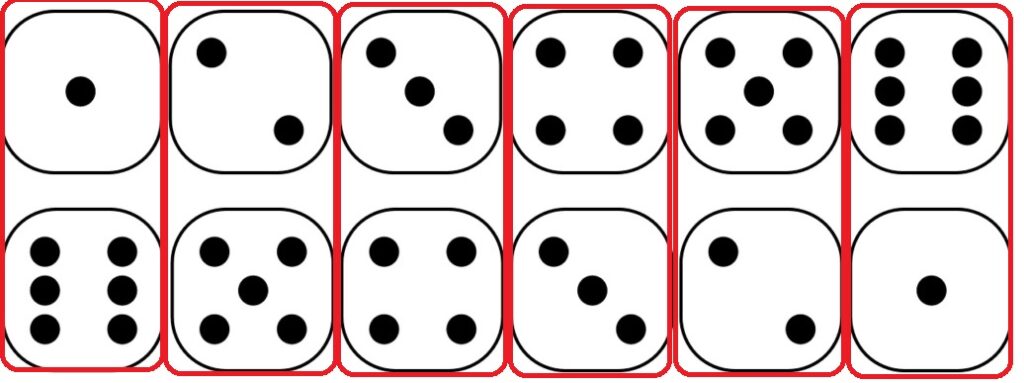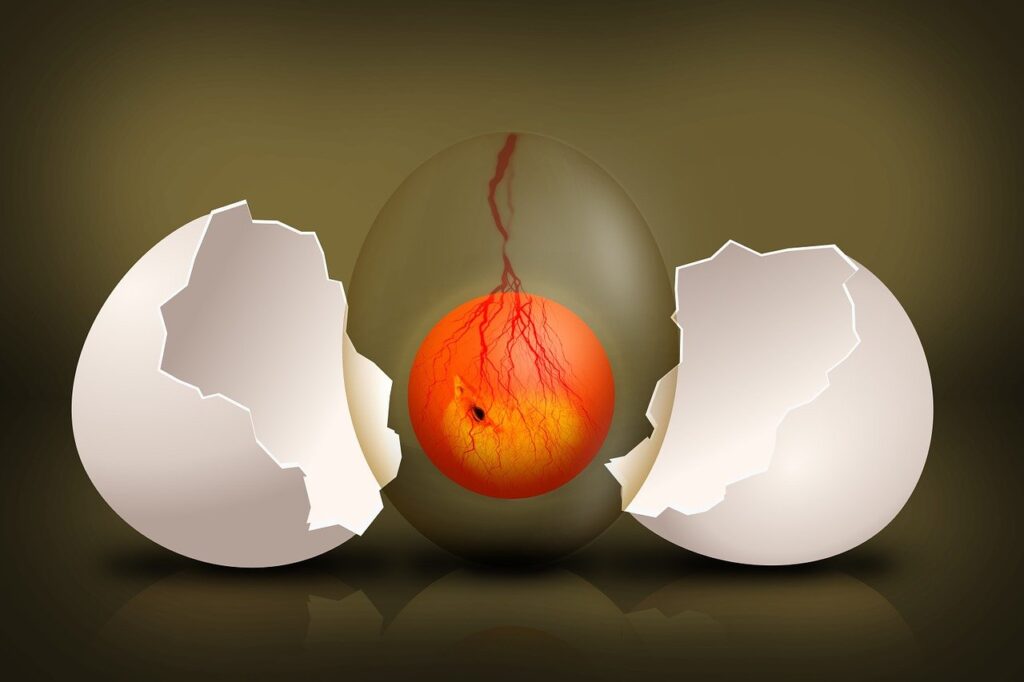We have seen how the probability of getting a given sum can be estimated pictorially when two dice are thrown. It is done by displaying all possible combinations of 6 outcomes each (total of 6 x 6 = 36) and then counting the number of pairs for a given sum.

You will see these pairs along the diagonals.

For example, the probability of getting a sum of four is 3/36 by counting along the line that passes through all 4s. And if you do it for each diagonal, you get the following distribution.

There is an even smarter way to reach the above. It is done by listing the outcomes of the first die on the top row, flipping around the one from the second die and placing it below.

All the pairs that add up to seven appear as shown below. There are six of them.

Slide the second row to the right by one, and you get the 8s (5 out of 35).

This flipping (and then sliding) is a convenient way to understand convolution!

